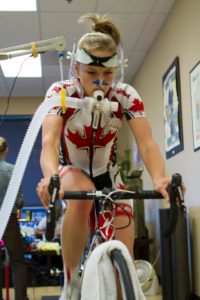Failing to plan is planning to fail. We’ve all heard this, and somewhere along the way the value of laying out your preseason and training may start to look attractive. But what components should a training plan have? As a racer that later became a coach, plus the near 20 years of working with hundreds of athletes, I see a few themes repeat themselves when athletes fail to achieve their planned goals. With the off season soon upon us now is the time to start thinking about the big picture for next season. Here are five points a successful training plan will address to help you reach your cycling goals.
Realistic Numbers
Finding a training plan is not difficult. Finding your training plan is the hard part. What amount of volume is appropriate? What amount of intensity? Both of these components combined to give the workload an athlete will see. Many athletes think more is better. Though this might be the case if your body can handle it, too much is often a one way ticket to overtraining. It’s better to take an honest look at your yearly volume and increase it only 10-15%. Some weeks might see more, others less. Overdoing it won’t make one faster.
Adequate Rest
 So much of what an athlete focuses on is the physical training. It makes sense that one of the first question most will ask when discussing a training plan is what workouts they’ll be doing. But, stressing the system is only part of the equation. Giving your body time to rest, recuperate, and adapt is where conditioning/fitness comes. This work versus rest balance not only involves day to day planning, but monthly and full season planning as well. Most athletes can tell when they are tired from recent training (acute fatigue). What is often missed is the thought of taking time off within a season. That seems counter-intuitive to purposely lose fitness so that you can train harder later. Getting the mix of weekly, monthly, and seasonal rest correct is one of the biggest challenges. Long term goals require a good balance of all three.
So much of what an athlete focuses on is the physical training. It makes sense that one of the first question most will ask when discussing a training plan is what workouts they’ll be doing. But, stressing the system is only part of the equation. Giving your body time to rest, recuperate, and adapt is where conditioning/fitness comes. This work versus rest balance not only involves day to day planning, but monthly and full season planning as well. Most athletes can tell when they are tired from recent training (acute fatigue). What is often missed is the thought of taking time off within a season. That seems counter-intuitive to purposely lose fitness so that you can train harder later. Getting the mix of weekly, monthly, and seasonal rest correct is one of the biggest challenges. Long term goals require a good balance of all three.
Proper Peaks
It is common for athletes that are adopting a training plan for the first time to be cautious of committing time periods to be at peak fitness. Most of this seems to stem from the belief that they will give up fitness and results in lesser events due to this focus. Most of the time this is not true. Sure, there is the chance that if you are dedicated to a given event, you might find your training has you a bit too tired to do your absolute best at a race a few weeks before. Or, the fact a late season race focus might have you starting a bit behind the 8 ball early is difficult to swallow considering your historical fitness at that time.

But, without a focus the other pieces of the season can’t be put in place. Training doesn’t really serve anything, and the body also doesn’t get to unload the stress its acquired through training. Having a peak period to anchor a plan will help you determine the right workouts, focus, and rest within a season.
Purposeful Objectives and Efficacy
The word “plan” implies a purpose. When it comes to athletes, that purpose is to get better. The best way to do just that is assessing weakness and tailoring training to improve in these areas. Given to our own device, most people spend most of their time doing what they are good doing.

Climbers climb more…people good on the flats stay away from the hills. The best opportunity to get faster in your given event is to determine what aspects of your abilities are holding you back and devise training that’s specific to improving these areas. And this is also the way to get the best return on investment. Off season, weekly, and monthly focus should be centered around training activities that address your weaknesses. But, this training has to be gauged for effectiveness. Periodically testing, whether by time or using a power meter, will determine if your training is having the desired effect. And the season should have different aspects that address the whole athlete’s needs. Even a great climber that has to climb in their events should have a plan that at least keeps that as a strength.
Flexibility
A good plan followed is better than a great plan ignored. Too often I see athletes that are slaves to their training plan. They look past obvious challenges, like recovery or the stress it puts on other aspects of their life, and soldier on. Or, they try to make up workouts after an illness, or attempt to train through times when they are sick. This never ends well. A training plan is a best guess, and should be “written in pencil” to allow changes as new and unexpected territory is being charted. Maybe a travel week was thrown at you by your boss. Or something on the home front is eating into effective recovery. And rarely does a season go by that an injury doesn’t keep us off the bike at some point. Even the most well thought out training plans require adjustments now and again. Not all variables can be known, and sometimes life proves we don’t even know what we don’t know. Small tweaks can allow training to stay consistent in the face of adversity, and the purpose of a block of training to still be realized. A training plan should work for the athlete, not the other way around.
There are many benefits to a well devised training plan. There are also many pitfalls. Learning to use it as a tool for training and not the reason we train is important. Being sure your plan possess the five elements here will improve the chances of being guided to a successful season. Enjoy your off season and here’s hoping for much success in 2018!
The post Planning for a Successful Season by Terry Ritter appeared first on Team Athletic Mentors.




 Our Hockey Site
Our Hockey Site Team AM
Team AM

